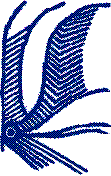My father was an ardent amateur photographer, and never failed to get on our
nerves at every occasion, calling us to stand still while he took a shot, be
it before the Great Wall of China or the Moscow Kremlin, or in the house
garden or before the Christmas tree. Later, of course, we greatly enjoyed
looking at ourselves in the photo album. But at the moment the photos were
taken, we were typically making it rather difficult for him.
That’s probably the reason why I was never eager to make photos, let
alone to own a camera. Not that I never had one, really. When I was a student,
I got a camera as present from my father, and I actually used it the one time
or other. In later times too, it would happen that I made a snapshot or another
at some occasion, though not with my own camera, because mine had long since
become non-functional.
Why then did I suddenly buy a camera in summer 2005?
|
|
Well, I was busy writing my 2007 monograph on “Malay
words and Malay things” in German publications before 1700, and I planned
to include some illustrations. I was getting along fine, as I either could order
or download scans of the pictures I wanted, or even make copies on a copying
machine of post-1880 reproductions of originals.
Until I decided I also wanted a copy of an atlas segment from a 1475 publication,
a so-called incunabula, having appeared in the cradle-period of printing.
There were reproductions available, but when I discovered that the State Library
here in Berlin had an original,[1]
I realized that I just couldn't settle for less.
Time was running short. And, besides that an ordered image required
a long time to be delivered, it would also be rather expensive. That was when
the librarian lady told me en passant that one was allowed, however, to
photograph it free of charge, if one did it oneself with an own camera without flash. That
settled it: I bought a (digital) camera.
|


